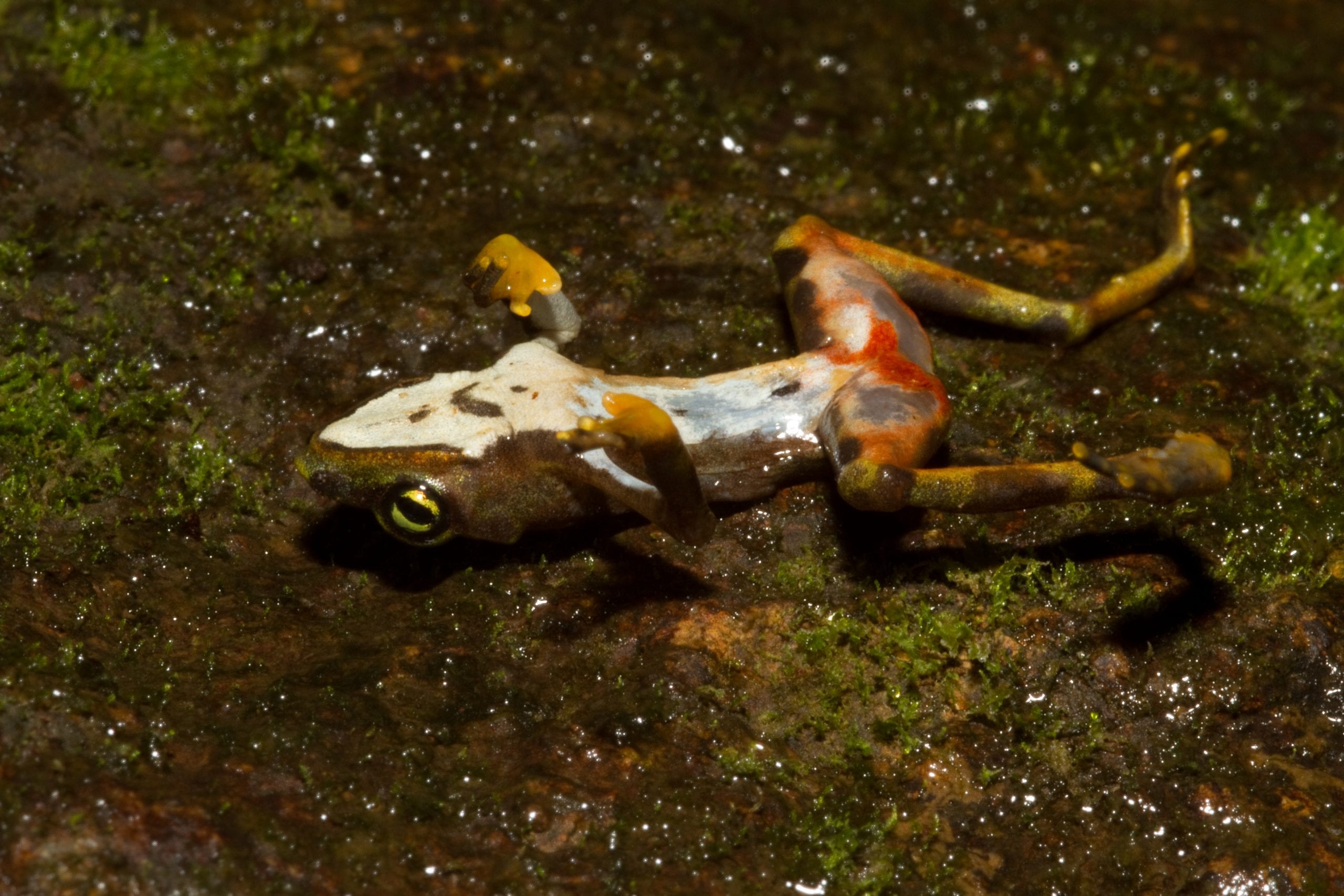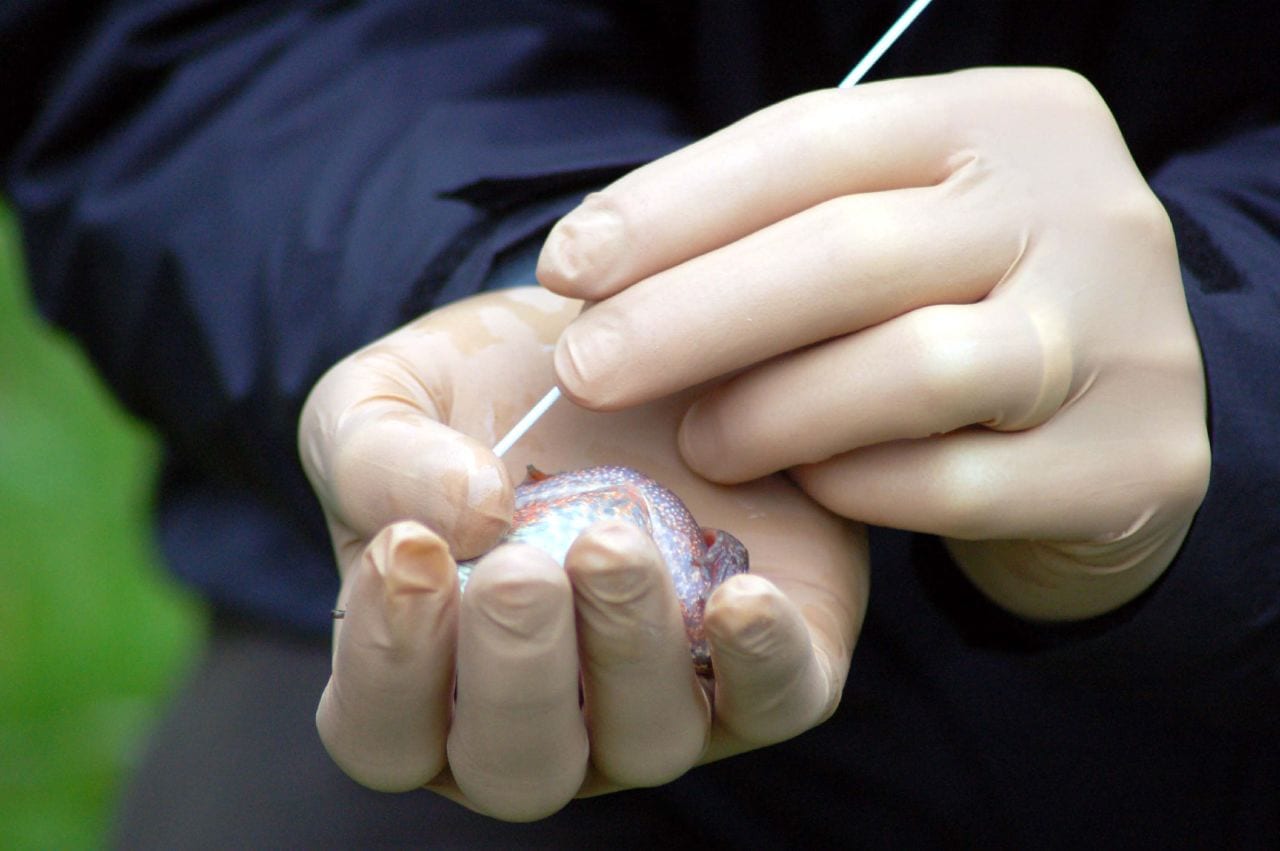For years a microscopic killer has been sweeping through amphibian populations, taking them down one species at a time. Scientists have been at a loss for how this bite-sized butcher has unleashed a plague of biblical proportions across many ecosystems. Is there any hope for our four-legged friends? Or will they simply croak?
While some fungi are beneficial and play vital roles in their ecosystems, the chytrid fungus has not proven to be one of them. This fungus was first discovered in 1993 in dying frogs in Queensland, Australia. Soon thereafter, it sailed across most continents bombarding amphibians communities.
This little assassin has now been detected on at least 287 species of amphibians from 36 countries. Not only that, but ~ 200 frog and salamander species have been driven to extinction by this fungus.
How is this tiny fungus having such a tragic effect on amphibians? What makes it so effective? While we don't understand exactly how the fungus works, we do know it has nasty side effects. This fungus thrives in the same environments amphibians do, making it the perfect villain. The chytrid fungus infects the skin of victims to the point that their skin sloughs off. Yup, you heard that right…sloughs off!
It does this by creating large amounts of keratin (the same stuff that makes up your skin and fingernails) by invading the surface layers of the amphibians skin, making it thick and tough. For many amphibians, including frogs, having a cast-like layer of skin is deadly because they absorb water and nutrients through their skin. This, for obvious reasons, is a major threat to amphibians across the world.
In some amphibian populations, this villain kills 100% of the individuals. In other populations, amphibians seem to be less susceptible. A puzzling question is, why does this fungus seem to be so unpredictable in its success?

While we don't know why there is such a difference in mortality across populations, scientists are trying to prevent further death from occurring by creating a sort of vaccine. That's right, we're vaccinating frogs!
To do this, Jessie Bushell, Director of Conservation at the San Francisco Zoo, is working with a team of people to perform search and rescue experiments. The target amphibians picked for these experiments are the mountain yellow-legged frogs. Mountain yellow-legged frogs are a good candidate for these vaccines because they are only found in a small location of California's alpine lakes, and have had more than a 90% population decrease due to the chytrid fungus.
Bushell and scientists have assembled an emergency search-and-rescue operation to try and save these four-legged friends.

Picture this: A helicopter flies on scene filled with a team of scientists, and all their gear as they approach the frog’s' habitat. The biologists carefully skim the lake area and collect tadpoles and juvenile mountain yellow-legged frogs to take back to the San Francisco and Oakland Zoos to “immunize.†They do this by exposing the frogs to small doses of the chytrid fungus.
Their hope is that these small exposures to the fungus will act in the same way vaccines do for humans, boosting their immunity so that when they are exposed to the fungus in the wild, they can put up a strong fight against it!
Once immunized at an early age, the frogs are allowed to grow to adulthood. When the adults are at a healthy phase, the scientists release them back into nature. This is really a last-ditch effort to save the mountain yellow-legged frogs, and as of summer 2016, it seems to be working. The most recent cohort released into the wild seems to be surviving pretty well.
While it might seem a bit crazy to be “immunizing†frogs, if these vaccinations enable them to survive the worst of the fungus outbreak, they may eventually become resistant to the chytrid fungus on their own, passing this immunity down to future generations without human help.
“This means we have to figure out ways to keep these frogs on the landscape with the chytrid long enough that evolution can actually happen,†Knapp says.
While this is a huge battle to take on, if we can stave off extinction for even a few species, then the effort is worth it.
About the Author:
 |
Amanda Shaver is a Ph.D. student in the Department of Genetics at the University of Georgia. She enjoys dancing, crafting, and playing with her dog Mr. Peabody. High on her list of accomplishments is eating a whole block of cheddar cheese in one sitting without negative consequences. Amanda currently serves an Associate Editor in Chief for the Athens Science Observer and is on the Athens Science Café Programming Board. You can email her at Amanda.shaver@uga.edu or follow her on Twitter @AOShaver. More from Amanda Shaver. |
About the Author
- athenssciencecafehttps://athensscienceobserver.com/author/athenssciencecafe/April 17, 2020
- athenssciencecafehttps://athensscienceobserver.com/author/athenssciencecafe/April 12, 2020
- athenssciencecafehttps://athensscienceobserver.com/author/athenssciencecafe/April 3, 2020
- athenssciencecafehttps://athensscienceobserver.com/author/athenssciencecafe/March 30, 2020







